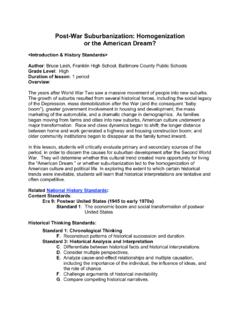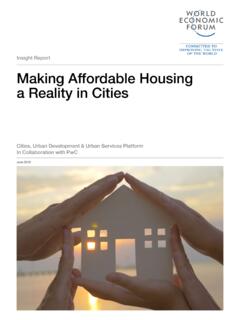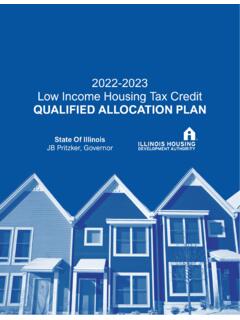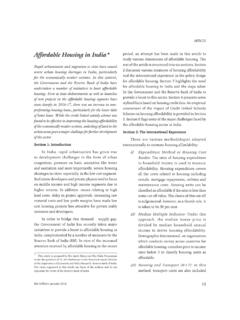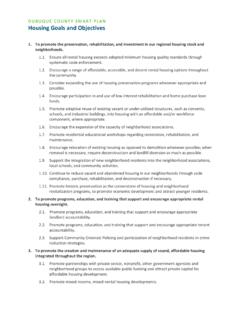Transcription of Racial Residential Segregation and Neighborhood Disparities
1 2100 M Street NW Washington DC 20037 Racial Residential Segregation and Neighborhood Disparities Solomon Greene, Margery Austin Turner, and Ruth Gourevitch August 2017 Where people live matters for their long-term social and economic success. While the How Neighborhoods Affect the Social and Economic Mobility of their Residents memo outlined the detrimental effects of living in concentrated poverty, this memo focuses on the Racial component of Residential Segregation primarily drawing on data on black-white Segregation . A typical white person lives in a Neighborhood that is 75 percent white and 8 percent African American, while a typical African American person lives in a Neighborhood that is only 35 percent white and 45 percent African American (Logan and Stults 2011).
2 What s more, we continue to see people of color overrepresented in high-poverty census tracts. In the United States, a low-income African American person is more than three times more likely to live in a Neighborhood with a poverty rate of 40 percent or more than a white person is, and a low-income Latino person is more than twice as likely to live in such a Neighborhood (Jargowsky 2015). These statistics show that Racial Residential Segregation and racialized concentrated poverty persist today. Racially segregated neighborhoods did not come about naturally. They are the physical manifestation of plans, policies, and practices that have systematically denied equal opportunity to minority populations.
3 The policies and practices of Racial exclusion described in this paper were primarily directed at African Americans but laid the foundation for patterns of Segregation among other Racial and ethnic groups (Massey and Denton 1987; Charles 2003; Zhang and Logan 2010). Recent research suggest that we are seeing declining Segregation across Racial and ethnic groups, although African Americans remain more highly segregated than any other Racial or ethnic group in the US (Firebaugh and Farrell 2016). This synthesis will outline various factors that have contributed to, and continue to reinforce, this pattern of Racial Segregation in US metropolitan areas.
4 Historical Drivers of Racial Segregation in the United States Over the 20th century, a myriad of development policies and practices, primarily directed at African Americans, significantly contributed to Racial Residential Segregation in cities nationwide. In the early 1900s, some cities explicitly used zoning ordinances to racially segregate neighborhoods. Redlining the practice through which individuals in minority neighborhoods were denied mortgages, and thus homeownership in the mid-20th century created and reinforced communities segregated by race (Shapiro, Meschede, and Osoro 2013). Also, beginning in the 1920s, racially restrictive covenants legally prohibited African Americans from owning, leasing, or occupying certain pieces of property, providing a legal framework for the systematic Racial Segregation of people of color until the late 1940s.
5 Racial covenants were so commonplace that by the end of the 1940s, over 80 percent of both Chicago and Los Angeles carried covenants that banned African American families from living in certain neighborhoods (US Commission on Civil Rights 1973). 2 In the latter half of the 20th century, new forces emerged that further contributed to the Racial Segregation of poor people in urban areas. The Federal Highway Act of 1956 demarcated neighborhoods along Racial lines, limiting African Americans access to employment opportunities and often physically separating them from the downtown core (Sanchez, Stolz, and Ma 2003).1 Highway-oriented transportation policies also helped create spatial mismatch the disparity that prevails when low-skill jobs are located away from the urban core in areas that are difficult to access via public transportation.
6 Public housing, often built in already-distressed communities, limited Residential mobility for low-income people of Even as attempts were made at desegregating neighborhoods and schools, threats of violence targeted toward African American populations jeopardized the safety of minority individuals in and around their own homes, confining families to specific neighborhoods and creating additional barriers to quality-of-life improvements. Ongoing Drivers of Residential Segregation in the United States By the late 20th century, civil rights legislation and evolving constitutional jurisprudence prohibited overt forms of discrimination in housing and lifted many formal barriers to Residential integration.
7 However, they were quickly replaced by subtler and ostensibly "race-neutral methods to exclude people of color from predominantly white neighborhoods. Exclusionary zoning policies such as large lot size requirements and large square footage per dwelling unit mandates make it difficult for lower-income residents to live in certain Federal and local subsidized housing programs also continue to prioritize building affordable housing in already-distressed neighborhoods, which reinforces the geographic Segregation of low-income people of color who are residents. And while the incidence of housing discrimination has generally declined since 1989, the 2012 Housing Discrimination Study shows that people of color looking for places to live are told about fewer homes and apartments than white people (Turner et al.)
8 2013). The effects of early forms of discrimination have also proved more enduring than formal legal changes would suggest. In Locked in Segregation , Roithmayr argues that families of color who live in segregated neighborhoods face the self-reinforcing effects of earlier efforts to exclude them [while] white families enjoy structural advantages, in terms of schooling, job referral networks and other forms of social capital (2004, 254). Low-income African American homeseekers are unable to gain the capital or feeling of safety to move to white neighborhoods; in addition, majority people of color neighborhoods often lack the quality services and housing stock necessary to appeal to white homeseekers, who often have other options outside these areas (Cashin 2004).
9 As a result, people of color are locked into areas of highly concentrated poverty, allowing white neighborhoods to grow and prosper more quickly (Roithmayr 2004). Evidence on Neighborhood Preferences and Choice Today, African Americans remain more highly segregated than any other Racial or ethnic group in the US, and research on Neighborhood preferences highlights the constrained choices that African Americans face in deciding where to live in today s segregated cities (Firebaugh and Farrell 2016). While studies show that the ideal Neighborhood for an African American person includes fewer white people than the ideal Neighborhood for a white person, few African Americans express a preference for living in a 3 predominantly African American community (Adelman 2005; Harris 2001).
10 As is often mentioned, economic barriers pose great challenges to Neighborhood integration. However, research suggests that if households were distributed across neighborhoods based on income only (and not race or ethnicity), then levels of black-white Segregation would significantly decrease (Ellen 2008). This emphasizes the importance of understanding the Racial component of Residential Segregation beyond economic barriers. In the research surrounding choices and preferences for where individuals live, fear is often highlighted as a force that prevents integration. Fear of hostility from white neighbors after moving into more racially mixed areas has been shown to prevent some African American families from moving out of distressed areas (Krysan and Farley 2002).

